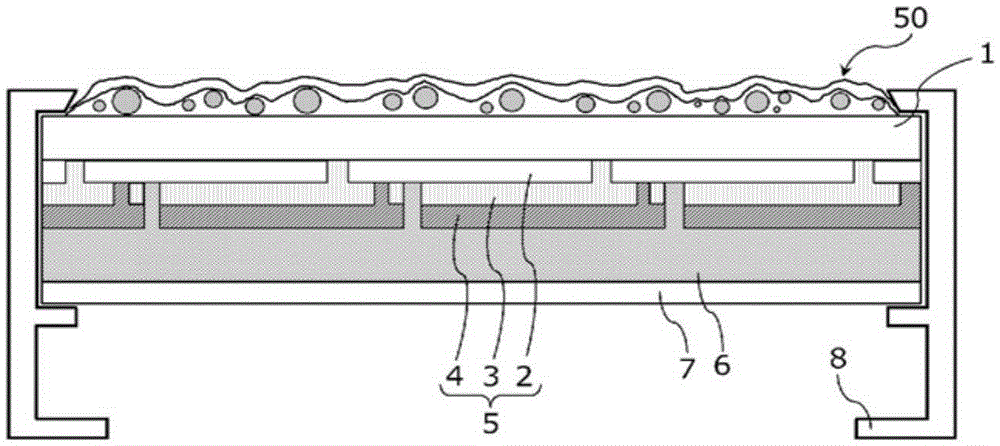Anti-glare film for solar cell module, solar cell module provided with anti-glare film, and method for manufacturing same
A solar cell and manufacturing method technology, which is applied to electrical components, circuits, optical components, etc., can solve the problem of difficult electrode layer, semiconductor layer patterning, reflected light irradiation of solar cell modules, and anti-glare methods that are difficult to apply to thin-film solar cells, etc. problem, to achieve the effect of excellent removability and suppressing the reduction of conversion efficiency
- Summary
- Abstract
- Description
- Claims
- Application Information
AI Technical Summary
Problems solved by technology
Method used
Image
Examples
Embodiment 1
[0153] (Preparation of Coating Solution)
[0154] As the coating solution for forming the first inorganic layer (the first coating solution), a solution containing polysilazane (manufactured by AZ Electronic Materials Co., Ltd. containing perhydropolysilazane at a solid content concentration of 20% by weight in dibutyl ether) (trade name: "AQUAMICANAX120-20") was added 2.5 parts by weight of silica particles (manufactured by Admatechs, average primary particle size: 1.2 μm), and 77.5 parts by weight of dibutyl ether as a solvent was added to prepare Coating solution. This coating liquid contained 62.5 parts by weight of fine particles with respect to 100 parts by weight of polysilazane, and the total solid content concentration was 6.5% by weight.
[0155] As the coating solution for forming the second inorganic layer (second coating solution), 80 parts by weight of dibutyl ether as a solvent was added to 20 parts by weight of a polysilazane-containing solution (AQUAMICANAX12...
Embodiment 2
[0161] In Example 2, an antiglare film containing fine particles in the second inorganic layer was formed. As the second coating solution, a hollow colloidal silica dispersion (colloid containing a solid content concentration of 20% by weight in methyl isobutyl ketone) was added to 20 parts by weight of a polysilazane-containing solution (AQUAMICANAX120-20). Silica (average secondary particle diameter: 50 nm dispersion) was added to 20 parts by weight, and 40 parts by weight of dibutyl ether was added as a solvent to prepare a coating liquid. The coating liquid contained 100 parts by weight of fine particles with respect to 100 parts by weight of solid content of polysilazane, and the total solid content concentration was 8.0% by weight.
[0162] Except for using the above-mentioned coating liquid containing colloidal silica as the second coating liquid for forming the second inorganic layer, in the same manner as in Example 1, a spray method was used to form a layer having an...
PUM
| Property | Measurement | Unit |
|---|---|---|
| thickness | aaaaa | aaaaa |
| thickness | aaaaa | aaaaa |
| particle size | aaaaa | aaaaa |
Abstract
Description
Claims
Application Information
 Login to View More
Login to View More - R&D
- Intellectual Property
- Life Sciences
- Materials
- Tech Scout
- Unparalleled Data Quality
- Higher Quality Content
- 60% Fewer Hallucinations
Browse by: Latest US Patents, China's latest patents, Technical Efficacy Thesaurus, Application Domain, Technology Topic, Popular Technical Reports.
© 2025 PatSnap. All rights reserved.Legal|Privacy policy|Modern Slavery Act Transparency Statement|Sitemap|About US| Contact US: help@patsnap.com



